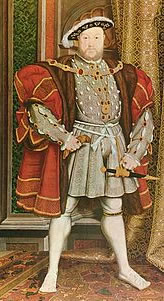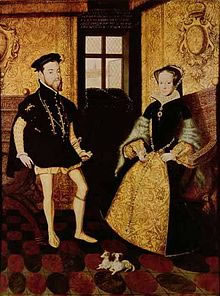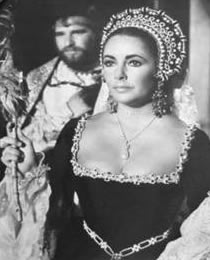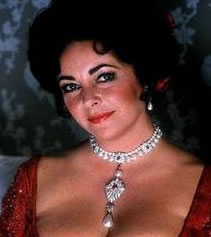|
Reviewed By Andreas Zabczyk
The Story of "La Peregrina, the Wandering Pearl"From Medieval Times to Modern Day Hollywood
This is a truly fascinating story that begins over 550 years ago and follows this unique gemstone from medieval times, when it was worn and appreciated by royal households and infamous bloodthirsty queens. It was then acquired by a famous historical general (Bonaparte), and then an English nobleman, before it reached modern day Hollywood where it was worn by Elizabeth Taylor. Surely a Hollywood blockbuster waiting to be made? This is a true story that Richard Burton considered writing, but sadly, he never did. This famous historical pearl is called La Peregrina for a reason. The Spanish translation means the "Pilgrim" or "the Wanderer" and it certainly was. This is the amazing story... The pearl was initially found by an African slave on the coast of the isle of Santa Margarita in the Gulf of Panama in the mid-16th century. At the time the Spanish trained men to harvest pearls from oysters on the sea bed by holding their breath. Thus the pearl, which was the size of a quail egg, was found. Thankfully the person who found it was subsequently rewarded with his freedom!
La Peregrina then changed royal families when it travelled to England, an enemy of the Spanish at this time. It was sent by the then King of Spain, Philip II (1527-1598) to be presented to Mary I of England, also known as "Mary Tudor" or "Bloody Mary".
The pearl was sent as a love token in anticipation of her marriage in 1554 and there are several portraits of the Queen Mary actually wearing the pearl.
Queen Mary I was the eldest daughter of King Henry VIII and Queen Catherine of Aragon, and reigned as Queen Mary of England from 1553 to 1558. Being the daughter of Henry VIII had its problems and Mary and her father fell out frequently, once not speaking for three years. While Henry married again (Ann Boleyn), Mary and her mother were wickedly kept apart and when Catherine died in 1536, Mary was "inconsolable". 
Mary's father King Henry VIII
So why was Mary, given the terrible nickname of Bloody Mary? Mary's father King Henry VIII (picture on the left) may have been somewhat responsible for Mary's "attitude". Mary was 37 when she saw a full-length portrait of Philip which was sent to her in September 1553, (there were no Internet dating sites in 1500s) and declared herself to be in love with him. 
Philip and Mary
Philip and Mary having a royal time in 1558 (picture on the right) four years after they were married. Please note that she is wearing the Peregrina Pearl. Unfortunately for Bloody Mary, Philip did not feel the same about her. He wrote to a correspondent in Brussels, "the marriage was concluded for no fleshly consideration"... clearly a smooth talker then. Their marriage at Winchester Cathedral on 25 July 1554 took place just two days after their first meeting. The following year, in early February 1555, the first executions began and it's quite probable that, as Mary was obviously so besotted with it, that she wore her pearl whilst witnessing the horrible burnings. Philip spent most of their marriage abroad, while his wife remained in England. By May 1558, Mary, who was often sick, became weak and ill, and eventually died, on 17 November 1558, aged 42 at St. James's Palace during an influenza epidemic. Philip, who was in Brussels, wrote in a letter, "I felt a reasonable regret for her death". After Mary's death, a clearly distraught Philip decided it would be a good idea to propose to her sister, Elizabeth. However, Elizabeth refused him.

Queen Isabel (Elizabeth)
Queen Isabel (Elizabeth), Philip IV's first wife wears the pearl in this picture from 1632. The curse of the pearl continued to rue the love lives of those who wore it and both Isabel and Philip were rumored to be having affairs. Isabel was thought to be having an affair with her gentleman in waiting, the poet Peralta. Peralta neglected a warning that his life was in peril, and he was murdered as he stepped out of his coach. The responsibility for his death was divided between Philip IV and Olivares (the Prime Minister and Philip's favorite at the time). On Isabel’s death in 1644, the pearl was passed to Philip’s second wife, Mariana of Austria. Unfortunately, once again, true romance was never in the stars as Mariana was actually Philip's 14-year-old niece! The marriage produced five children, only two of whom survived into adulthood and suffered from the physical effects of inbreeding. Mariana died on 16 May 1696 at the Uceda Palace in Madrid, Spain, and at that moment a total eclipse of the moon occurred, which cloaked the Spanish capital in darkness. Also obscured were details of the pearl. Along with the death of the unfortunate Mariana, documentation regarding the pearl was lost and it wasn’t until about 1813, over a hundred years later, that the pearl reappears in history.
In 1808, Napoleon invaded Spain, crushed the Spanish and placed Joseph Bonaparte on the Spanish throne. Joseph ruled for five years until he was defeated by the Duke of Wellington in 1813, which meant he had to flee Spain. He took with him some of the Spanish royal jewels and the Peregrina Pearl. After the final fall of Napoleon Bonaparte in 1815, Joseph Bonaparte emigrated from France to the United States. He died in Florence in 1844 and passed the pearl on to his nephew, Charles Louis Bonaparte. Charles considered himself to be the legitimate claimant to the French throne and spent the majority of his lifetime trying to transform Bonapartism into a political ideology. He led an adventurous lifestyle, bought a castle, attempted coups and eventually arrived in Paris, where he began preparations to run for French presidency and succeeded in 1848. In 1852 after another coup, he announced himself the emperor of France; Napoleon III. Before dying in 1873, he sold the Peregrina Pearl to Lord James Hamilton, the 2nd Marquess of Abercorn, who was born in Mayfair, London, on January 21, 1811. Over the next few years the pearl fell out of its necklace's setting on at least two occasions. The first time, the pearl got lost in a sofa in Windsor Castle, the second time, during a ball at Buckingham Palace. On both occasions, the pearl was recovered. It remained in the Abercorn family for over a hundred years until it was placed with Sotheby's for auction in 1969.

Elizabeth Taylor wearing the pearl in the 1969 film, Ann of the Thousand Days
It is known that Richard Burton bought items of jewelry with an awareness of the history, and this is certainly the case with La Peregrina, as he commented, "It used to belong to the Welsh and I thought it time they got it back". Elizabeth got her inspiration for the necklace's new design from one of the paintings of Mary, above, who was wearing it as a choker. Burton considered bidding on a four-hundred-year-old painting of Queen Mary wearing the pearl, but instead helped the National Art Collections Fund to acquire it. The pearl’s former setting can be seen in publicity shots for Elizabeth’s cameo in the 1969 film, Anne of the Thousand Days, and the new, more elaborate setting in the films Divorce His—Divorce Hers and A Little Night Music. 
Elizabeth Taylor
So what of the pearl now? After Elizabeth Taylor’s death in March 2011, her jewelry was shown on a world tour. The pearl was sold at a Christie's auction in December 2011 for a record $11.8 million. Before the auction, the pearl was given a pre-sale estimate of $2 to $3 million. However, after a mere four and a half minutes' bidding, the pearl was sold for a price that surpassed all expectations. It was purchased by a private buyer from Asia. We hope you've found this article interesting. Why not email us with your thoughts or any questions? We always like to hear from our customers. This Page in Other Languages
|
||||||||||||||
| STAY IN TOUCH | NEWSLETTER |
| *You're signing up to receive GemSelect promotional email. |
Copyright © 2005-2024 GemSelect.com all rights reserved.
Reproduction (text or graphics) without the express written consent of GemSelect.com (SETT Company Ltd.) is strictly prohibited.
1435